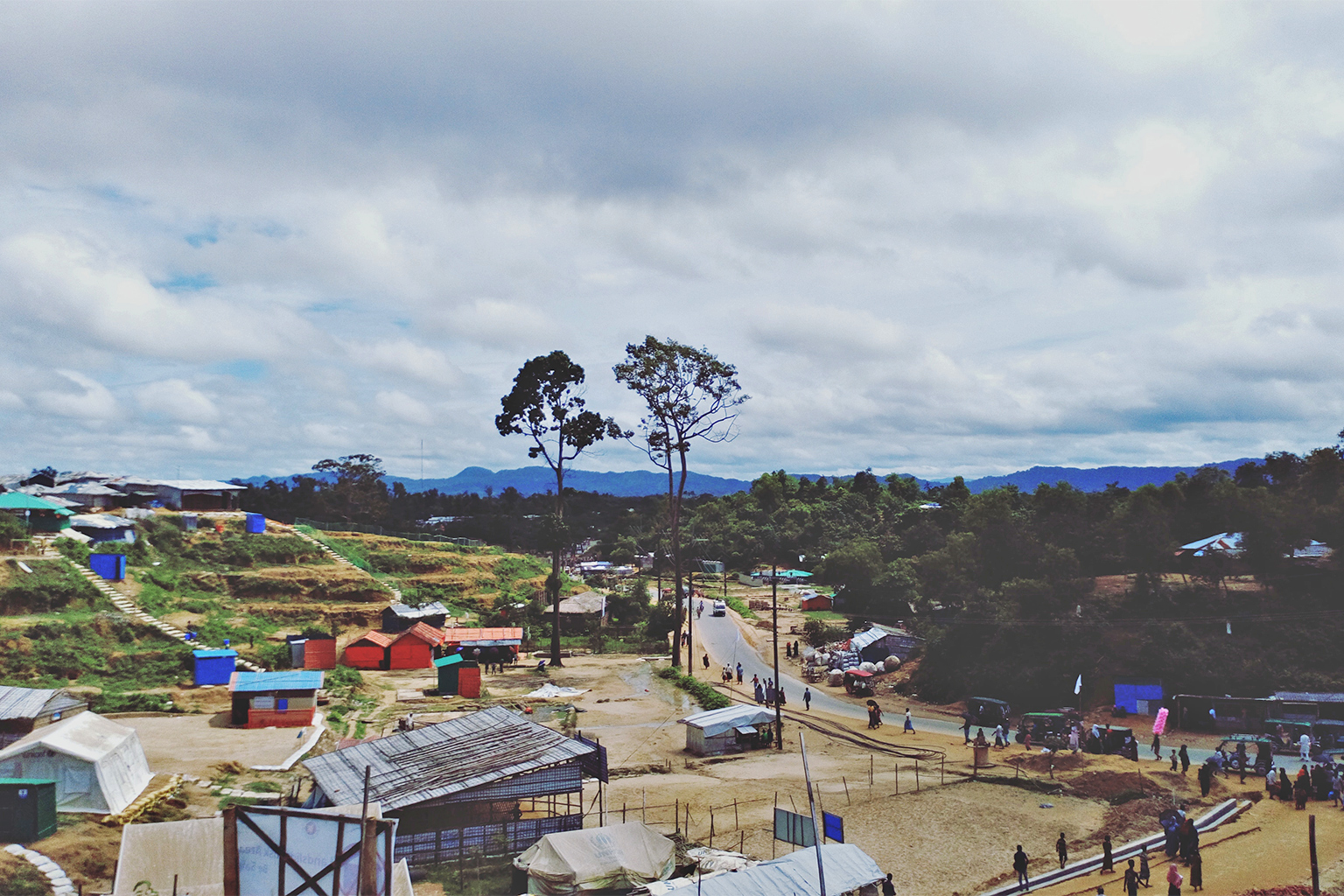How much of Bangladesh’s protected forests are really protected?


- A move last year by the Bangladesh government to erase protections for a swath of reserved forest and award it to the country’s soccer federation for a training facility garnered outrage — but is only one example of how protected forests across the country continue to be degraded.
- The country has 51 protected areas that hold a combined 815,607 hectares (2.02 million acres) of forest meant to preserve biodiversity and wildlife, but state-sponsored development projects have emerged as one of the key threats to these conservation initiatives.
- In some protected areas, such as Teknaf Wildlife Sanctuary, it’s firewood collection and farming by local communities that are driving much of the deforestation, prompting calls for the government to come up with alternative fuel and livelihood sources that leave the forests standing.
- The government has implemented a co-management approach to conserve forests while providing sustainable benefits to communities, but experts say this needs to be reassessed as deforestation rates are higher inside protected areas than in the surrounding areas where it’s implemented.
DHAKA — On July 20 last year, representatives from 11 NGOs held a joint protest against a government decision to establish a FIFA-funded training facility inside a reserved forest.
The previous month, the government had de-reserved an 8-hectare (20-acre) plot of land inside the Khuniya Palong reserved forest in the district of Cox’s Bazar, and on July 4 and transferred it to the Bangladesh Football Federation (BFF) for the planned “center of excellence.”
The proposed training facility will cost around $3.6 million and include two standard-sized soccer fields, a four-story dormitory, and medical facilities. Its construction, the conservationists and activists warned, would lead to the clearing of at least 30,000 trees in the reserved forest that’s home to endangered Asian elephants and other wildlife.
Officials rebuffed the protest, with Md. Sarwar Alam, the divisional forest officer (DFO) for the region, saying the land was awarded “as per the instruction of government high ups.”
In the months since then, there’s been no other response from the government, even as Bangladeshi conservationists and environmental activists continue to press FIFA not to fund the training center.
“We have informed FIFA about this. We welcome the funding but not in our reserve forest. They can do it elsewhere,” said Syeda Rizwana Hasan, chief executive of the Bangladesh Environmental Lawyers Association (BELA).

Iftekharuzzaman, executive director of Transparency International Bangladesh, earlier said that “FIFA, according to its green strategy, cannot fund any development project detrimental to the environment and ecology.”
The Khuniya Palong case is emblematic of the whittling away of forests, including protected ones, across Bangladesh for a wide range of developments. The country has 51 protected areas that hold a combined 815,607 hectares (2.02 million acres) of forest. These are meant to preserve biodiversity and wildlife, but state-sponsored development projects have emerged as one of the key threats to these conservation initiatives.
A 2021 study by Bangladeshi researchers based in Japan shows that between 2001 and 2018, Bangladesh lost 6,388 hectares (15,785 acres) of forest in four protected areas — Chunati Wildlife Sanctuary, Baroiyadhala National Park, Hazarikhil Wildlife Sanctuary, and Dudpukuria-Dhopachari Wildlife Sanctuary — and their surroundings.
Chunati, one of the oldest protected areas in Bangladesh, experienced deforestation of 502 hectares (1,240 acres) inside its boundaries and 2,845 hectares (7,030 acres) in its buffer zone. The deforestation rate increased fourfold from 2001-2013 and by a factor of 21 by 2018 in this sanctuary alone, the study says.
It’s a similar story in forests across Cox’s Bazar. A joint survey by BELA and the Youth Environment Society found that nearly 18% of the total 105,236 hectares (260,044 acres) of forested land in the district had been claimed by 696 organizations and 43,568 individuals. That’s in addition to the 5,816 hectares (14,372 acres) distributed by the government to various government agencies, and the 2,494 hectares (6,163 acres) degraded during the influx of Rohingya refugees from neighboring Myanmar.
That means Cox’s Bazar — Bangladesh’s tourist capital, renowned for having the longest unbroken stretch of beach in the country, hemmed by hilly forests — has lost one-third of its total forest cover.


Deforestation inside protected lands is higher than in surrounding areas
Another 2021 study, by Bangladeshi and Japanese researchers, shows that protected areas in Bangladesh face greater deforestation inside their boundaries than in their immediate surroundings.
The study focuses on Teknaf Wildlife Sanctuary in Cox’s Bazar, a reserved forest since 1907. From 1989-2015, the forest cover in this protected area decreased by 64%, the researchers found. During the same period, forest cover in the wider Teknaf Peninsula declined by 46%.
“A total of 1735 ha [4,287 acres] of forest land cover was lost, and forest decreased from 18% to 10% of the total area,” the study says, adding that “[f]orest was the only land-cover type to decrease in this period.”
Deforestation here is driven mostly by the local community, the study says. Teknaf’s long history as a reserved forest means there’s no presence there of heavy industry, large factories, or even large-scale logging facilities. Instead, much of the tree clearing is being done for fuelwood collection, small-scale farming, and settlement encroachment, according to the study.
Researchers say it’s a challenge to involve the local community in forest management, and that there needs to be a better understanding of the relationship between people and forest.
“Alternative to firewood needs to be discovered for the people who depend on the forest,” said study co-author M. Abiar Rahman, from Bangladesh’s BSMR Agricultural University. “At the same time, most of these people are extremely poor, having no choice of other income sources. It must be addressed.”
He added that, “If the forests are not disturbed, they would regenerate naturally.”

Protected areas or paper parks?
Despite a general easing in deforestation rates, from 2010-2018 the fragmentation of forests continued to worsen within protected areas and in adjacent unprotected areas. Without proper management, protected areas may not be able to live up to their conservation goals, researchers and activists say.
“The protected areas are nothing but paper parks,” said BELA’s Rizwana Hasan. “The government declared many areas as protected lands. But at the same time, they are de-reserving parts of them and allocating them to different agencies. It reveals the lack of their commitment.”
The Bangladesh Forest Department lists 56,095 hectares (138,613 acres) of protected areas as currently being illegally occupied by 88,215 individuals and organizations across the country.
The government has initiated a new governance and management approach for protected areas to conserve forests and their biodiversity while also providing sustainable benefits to surrounding communities.
However, the rate of deforestation actually increased inside protected areas after the implementation of the co-management approach, the Teknaf case study shows. It adds that the success of this approach depends on ongoing monitoring and evaluation efforts.
“With the continual degradation of protected forest lands, it seems the protected status remains only on paper in Bangladesh,” Rahman said.

Experts also recommend that forest managers need to keep track of the status of forests and then make projections based on that information. That’s because forest transition in a country like Bangladesh is highly influenced by economic development and agricultural intensification, and both of these factors have changed rapidly in recent years.
“The [forest department] policymakers must connect forest policies with forest transition trends and develop unique management plans for the critical protected areas where an appropriate balance should be maintained between participation and protection,” Rahman said.
Asked about the ongoing loss of forests inside protected areas, Cox’s Bazar forestry officer Alam declined to comment, and suggested filing a formal request to the chief forest conservator for the required information.
Banner image: Cox’s Bazar has lost 2,500 hectares (6,200 acres) of forest land due to the Rohingya influx which began in 2017. Image by Mahadi Al Hasnat.
Source
Language of the news reported
Copyright © Source (mentioned above). All rights reserved. The Land Portal distributes materials without the copyright owner’s permission based on the “fair use” doctrine of copyright, meaning that we post news articles for non-commercial, informative purposes. If you are the owner of the article or report and would like it to be removed, please contact us at hello@landportal.info and we will remove the posting immediately.
Various news items related to land governance are posted on the Land Portal every day by the Land Portal users, from various sources, such as news organizations and other institutions and individuals, representing a diversity of positions on every topic. The copyright lies with the source of the article; the Land Portal Foundation does not have the legal right to edit or correct the article, nor does the Foundation endorse its content. To make corrections or ask for permission to republish or other authorized use of this material, please contact the copyright holder.
